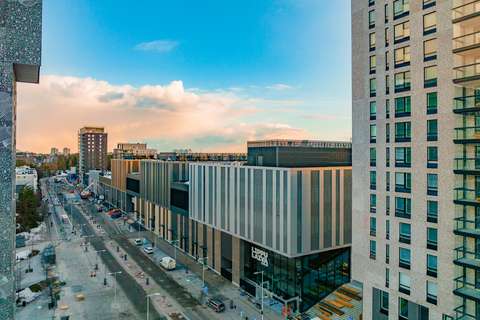Lippulaiva and Espoo working together for more sustainable energy

Urban centre Lippulaiva, which opened this spring, makes extensive use of sustainable energy production methods, such as geothermal energy and solar panels. Citycon and the City of Espoo have also wanted to involve residents in sustainable lifestyle solutions.
Lippulaiva, a new urban centre that opened in Espoonlahti at the end of March, and its owner Citycon are working with the City of Espoo as part of the extensive European SPARCS cooperation project. The project has selected Espoo as an international example and pioneer for various sustainable development and energy production activities. Urban centre Lippulaiva is one of Espoo’s three demo sites and uses a number of sustainable energy solutions.
Key themes of the SPARCS project include the development of energy-positive areas, i.e. areas that produce more energy than they consume, as well as sustainable mobility solutions and resident participation. The aim is to work towards carbon-neutral and sustainable cities. These themes have been pursued and successfully implemented in Lippulaiva as well.
Lippulaiva already makes extensive use of new energy solutions; underneath the centre is the largest geothermal energy plant in a commercial building in Europe, which is used for both heating and cooling in the building. The total length of the geothermal wells is as much as 51 kilometres. The geothermal energy solution will cover almost all of the heating and cooling needs of Lippulaiva and the blocks of flats to be built adjacent to it. District heating and an electric boiler are used to balance peak power needs when needed. The condensation heat from the shops’ refrigeration and cooling systems is fed back into the geothermal wells, which in turn improves the capacity and efficiency of the system. The solar panels installed on the roof and facade of Lippulaiva provide clean and renewable electricity locally. This means that the centre has been carbon-neutral in terms of energy production and self-sufficient in terms of heating since its opening.
Lippulaiva is an important mobility hub for the people of Espoo, and its role will become even more prominent in the future. Espoonlahti metro station is located under the centre, and the West Metro is planned to start operating to Espoonlahti in 2023. Lippulaiva also has a bus terminal, which serves the metro’s feeder traffic in the Espoonlahti major district. Lippulaiva also wants to support cycling and e-mobility, with as many as 1,400 bicycle parking spaces and more than 130 charging stations for electric cars.
Citycon and the City of Espoo have wanted to engage local residents, especially young people, to participate in the co-creation of the new urban centre. This is also one of the objectives of the SPARCS project. The Buddy Class and Buddy Family collaboration, which have been running since the construction of the urban centre, will continue with local residents in the future.
The City of Espoo organised the second part of the hybrid event series ‘Following the carbon footprint – towards a sustainable lifestyle!’ at Lippulaiva Library on Wednesday 1 June, which featured expert presentations on sustainable living challenges faced by residents and solutions to them. You can check the recording of the webinar here.